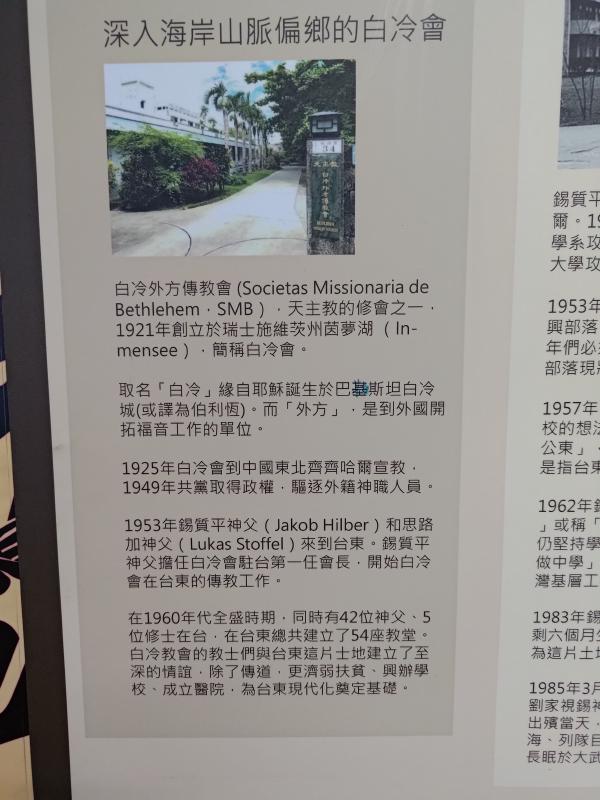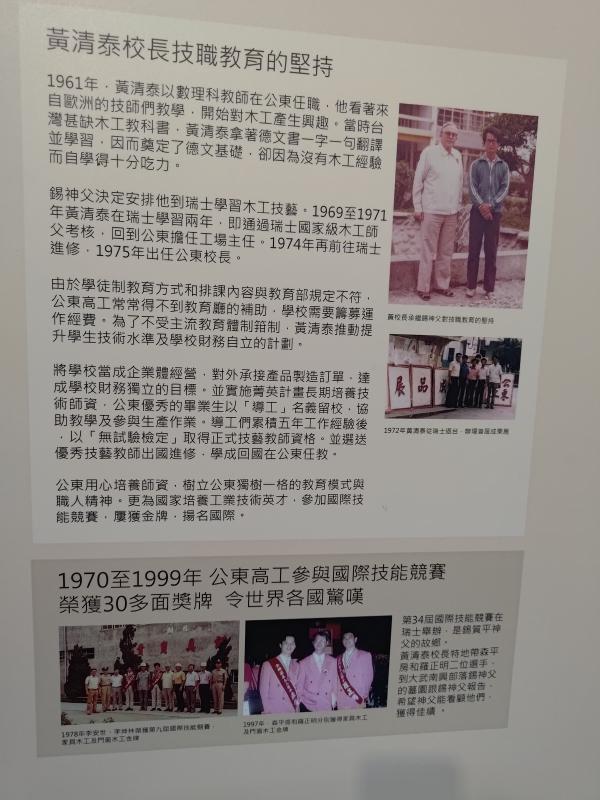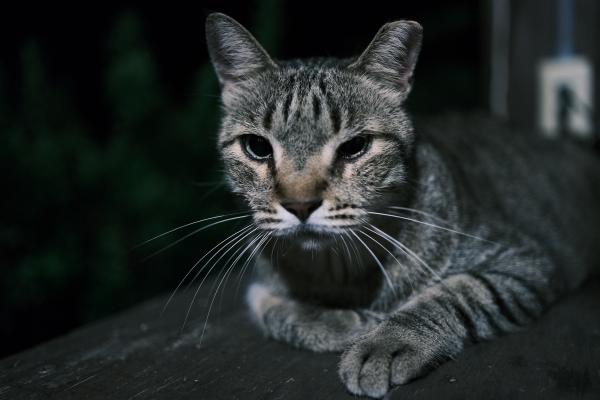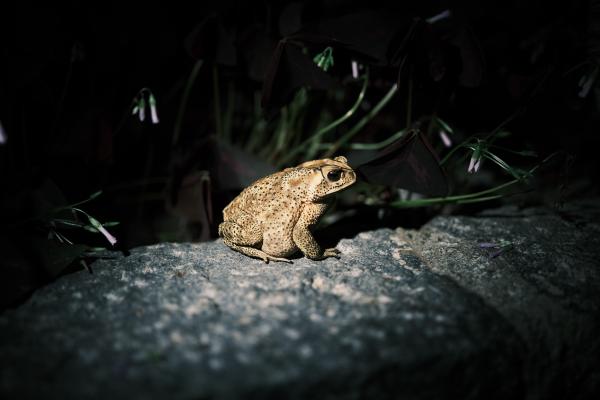In early August, 2023, the Cross-Generational Bilingual Training Program in Taitung invited me to their Taitung In-Depth Tourism English Service Guided Tour, or, CGBTPiT’s TIDTESGT. They have no website.
As far as I could determine, this program is from some kind of tourism-focused office of the Taidong government, with the objective of developing tourist activities for English speakers within Taidong county. Wait, but there’s no “English” in the title of their Training Program, it just says “Bilingual!” Don’t worry, in Taiwan, “bilingual” can only ever mean “English and Mandarin” (a common critique of the 2030 Bilingual Nation Initiative).
Good motive, though they apparently had a bit of trouble getting recruits for the nearly all-expenses-paid trip. That might be because the only way I was able to hear about it was Jade sending me a Google Doc application for the trip. That doc did have some nice videos from the previous couple trips, though:
- https://www.youtube.com/watch?v=ILmXrsHo9Es&t=1s
- https://www.facebook.com/100063632803493/videos/189131489435966
Now that I re-read this form, I’m realizing I got the name wrong, above. It’s actually the Taitung County Government International Development and Planning Department’s trip, executed by CoCreate Planning & Design Consultancy, or TCGIDPDCCP&DC for short. Who knows!
Point is, someone paid for my train tickets and housing to go to Taidong and stay there for two nights, including several incredible meals and really fun tours and activities. I had a great time and want to share some of the stuff we got up to because it was a pretty cool way to check out Taidong.
If you’re interested in further reading material, or an alternative itinerary, you can check out the booklets they made for our reference during the trip. There’s actually some fun info in there. Here’s the PDF from our trip, and another one from the trip of people after us. I tried to duplicate the info into this post but the PDFs aren’t formatted in a way that makes copying text out easy. Another good resource is Crossroad’s circle.so page for Taidong.
Itinerary
Day 0
Train to Taidong
I grabbed a train from Taipei, at Songshan Station, to Taidong. If you get an express train, usually labeled something like “T.C. Ltd. Exp (Coast Line)” or “T.C. Ltd. Exp (Mountain Line)”, you can get to Taidong in just under 4.5 hours for about 750NTD one way. I booked on the TRA Android app which works shockingly well and takes USA credit cards.
Stay at Norden Ruder hostel
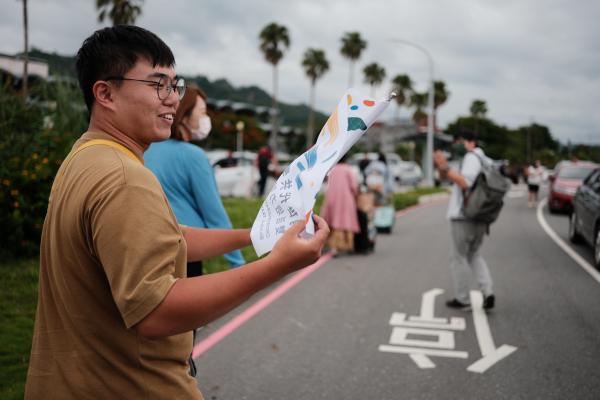
I showed up on time, purposefully ignored the nice people with the cool flag that were obviously trying to get my attention so as to beeline to the bathroom, then came back out to meet up with my handlers, who drove us to the excellent Norden Ruder hostel, my favorite place to stay in Taidong. We usually stay here for Crossroads trips as well.
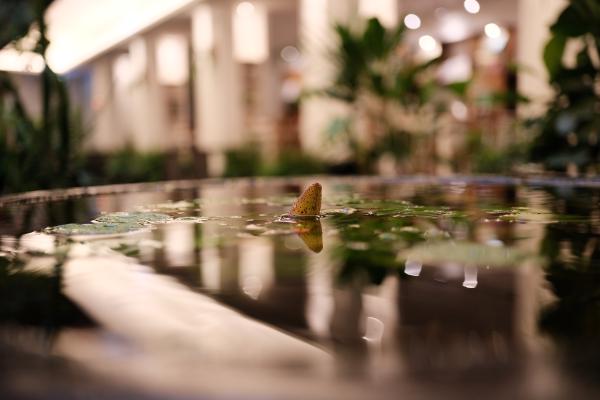
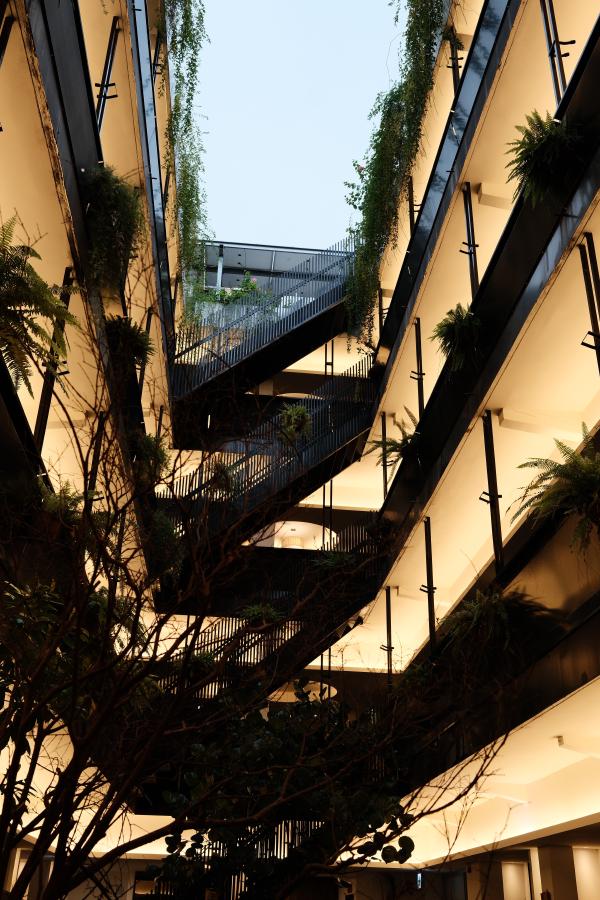

Eat a Hella Good Dinner
Stephen recommended a couple really good looking restaurants, but only one of his suggestions was actually open, a place that focuses on red quinoa called “七里坡紅藜養生料理” . It was really good! The three of us relaxed and got to know eachother, since Bream was busy.

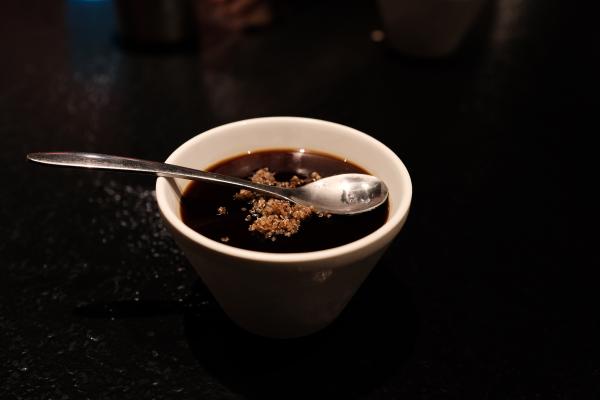
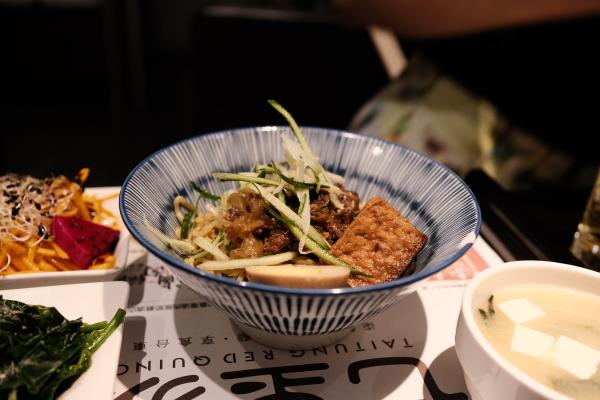
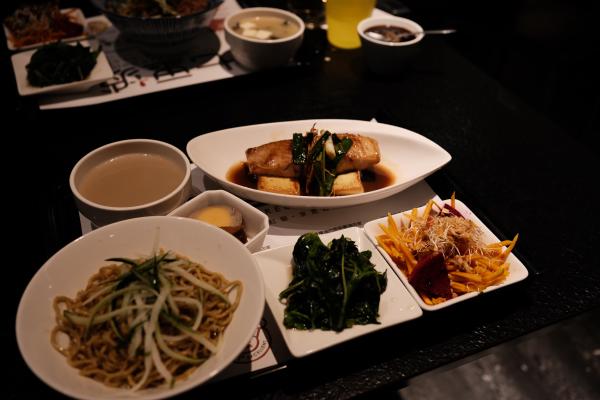
Day 1
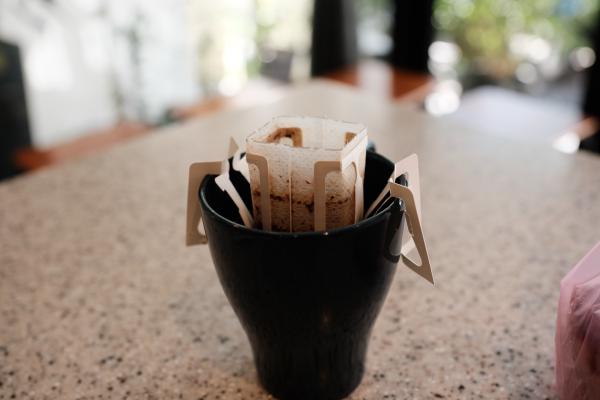

Taromak Rukai Community Tour
Our first big tour was at Taromak Rukai tribe. In Mandarin that’s 達魯瑪克部落.

We hung out for a bit with our tour guide in his really cool outfit waiting for the student that was apparently supposed to translate for us, then kicked off an “entering ritual,” or 入村儀式.
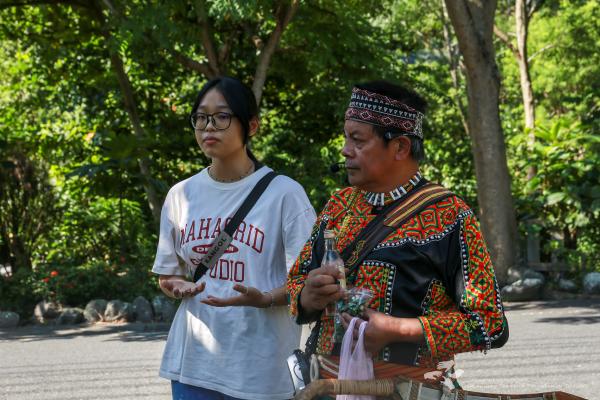
Bream and I were volunteered for the entering ritual. It involved standing before the big statue at the entrance to the tribe, shouting some things, and chucking a small bamboo cup of liquor into the air after taking a small sip. It sounded like we were giving thanks and offerings to ancestors and various animist spirits, such as the mountains, air, forest, etc. Fresh start to the day!
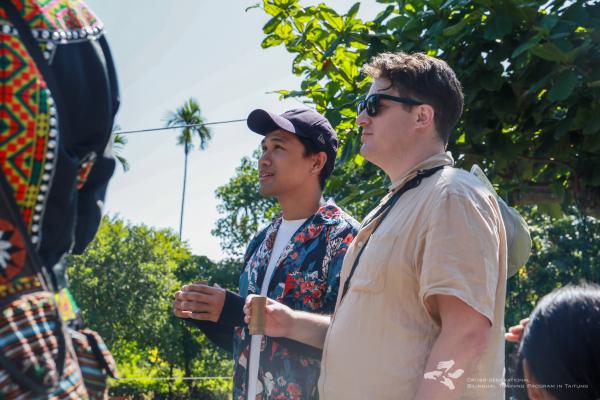
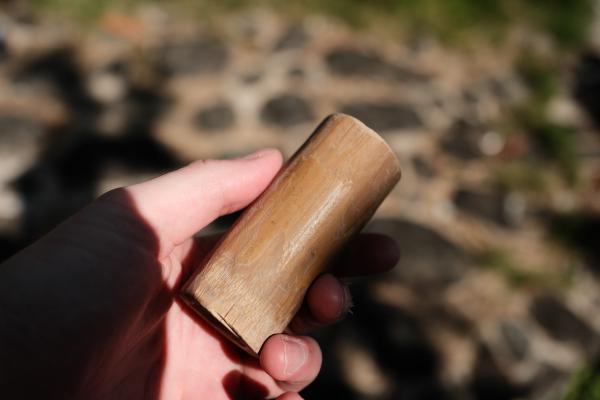

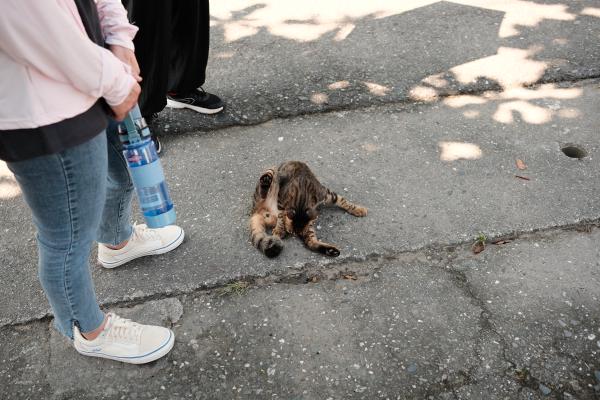
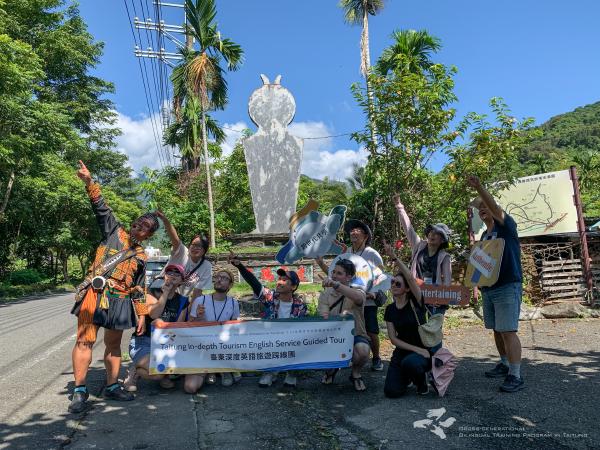
From here we wandered over to a fire memorial, 火災紀念亭, commemorating a tragedy that had occurred some 60 or so years ago, where a large portion of the village burned down during lunar new year. The guide cracked a joke about a new years BBQ that the student refused to translate, lol.
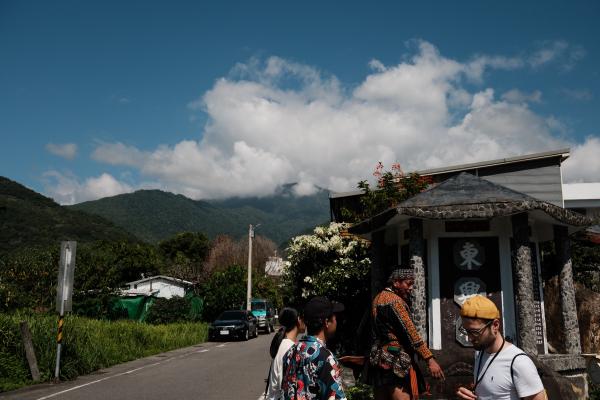
Next was a history lesson and notes on the myths and customs of the tribe, in mandarin 部落簡史、文化與神話故事. They had a couple panels depicting mythological scenes, as well as a large pole with a sculpture on top that included many symbols important to the tribe.
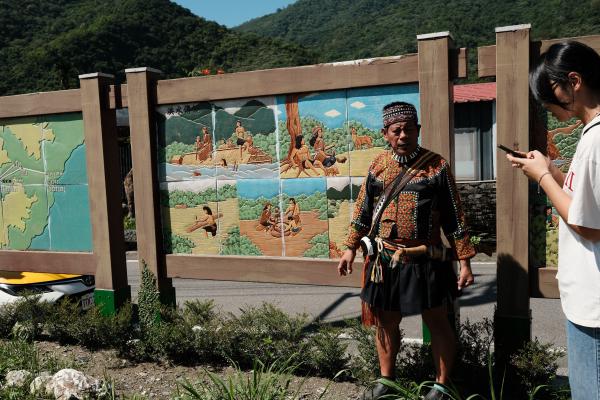
The myth he spent the most time on involved a small and large species of deer, and their involvement in acquiring fire for humans, who in the mythos could communicate with animals directly. There was a swapping of antlers involved in the story, which the small species of deer is still upset with to this day, which is why its barking cry sounds like “fuck! fuck!” I think it’d be interesting to follow up more on these myths because the acquisition of fire myth sounded a lot like a promethean myth.
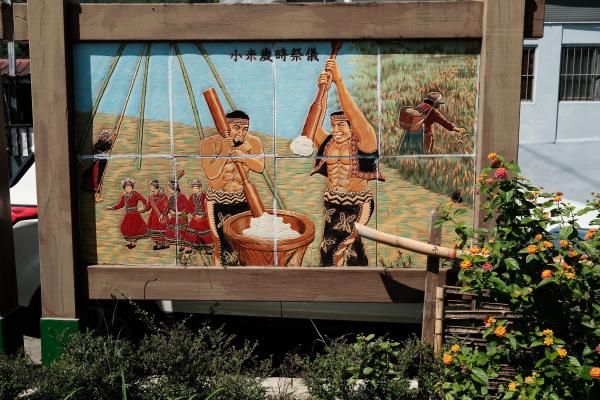
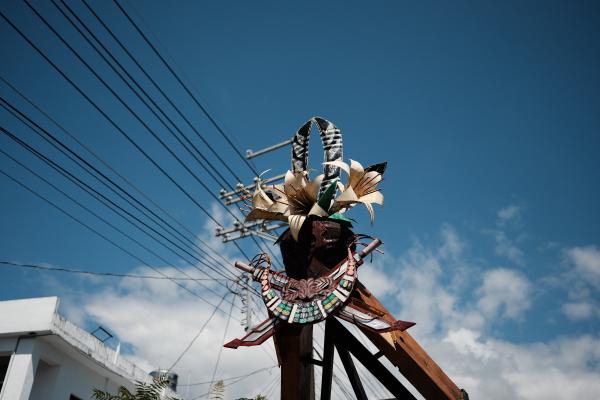
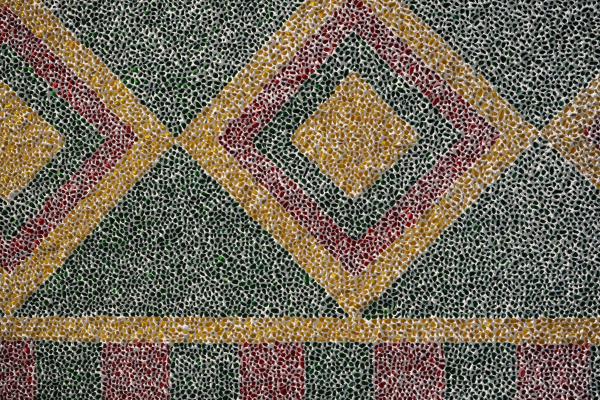
The tour guide talked on and off about how the tribe fared during Japanese occupation, and mentioned specifically really classic fascist techniques employed, such as choosing specific members of the tribe to police the camp they’d all been moved to, rather than use Japanese soldiers to do so. He lamented that the Japanese also forced them to stop their custom of beheading intruders, and that the Japanese forced them to make toilets.

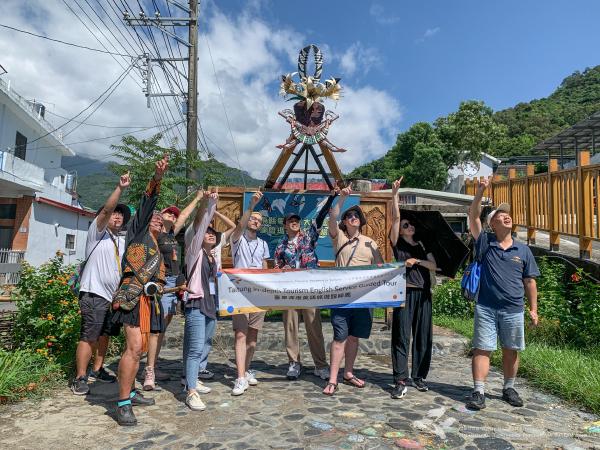
Next we walk into the village proper to check out the chieftain’s house, 頭目家與祖靈屋. On the way we pass a Christian funeral for a really old member of the tribe, apparently an elder of some form. Christian iconography is a constant theme in Taidong tribes, with various missionaries showing up frequently over the last century or so, usually with gifts and aid. The tribes, typically removed from the greater benefits of whoever is imperialising them at the time, welcome the missionaries and their gifts with open arms, and then the missionaries get to work convertin’. It’s unclear just how serious tribal members are about Christianity, or how animist the religion has become in the meantime. They certainly maintain a large portion of their customs and beliefs, particularly around death and ancestor worship.

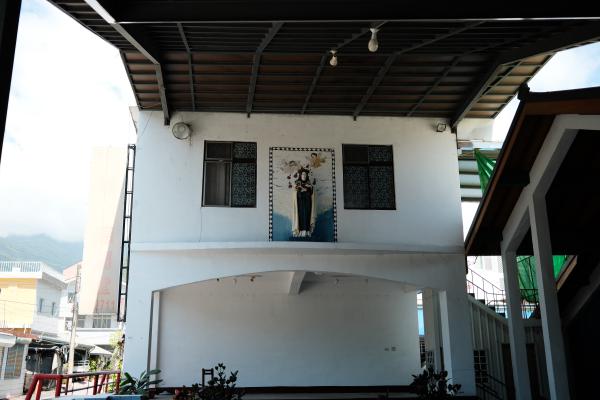
We walked up to the chieftain’s house, which was near another building that I believe traditionally was where the millet was stored. We apparently weren’t supposed to point at the building or really even look at it too much. We were given some kind of explanation about how the food there was reserved for the sick, but I wasn’t clear on that.
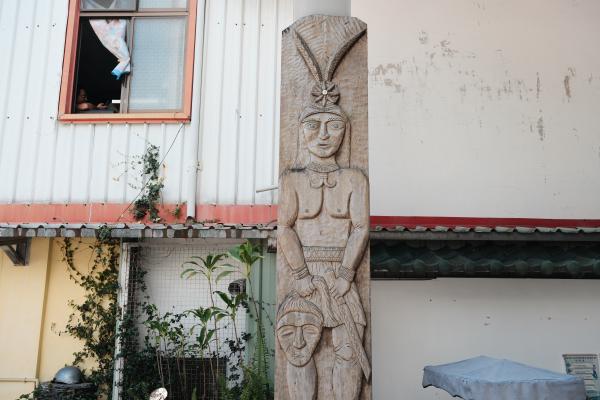
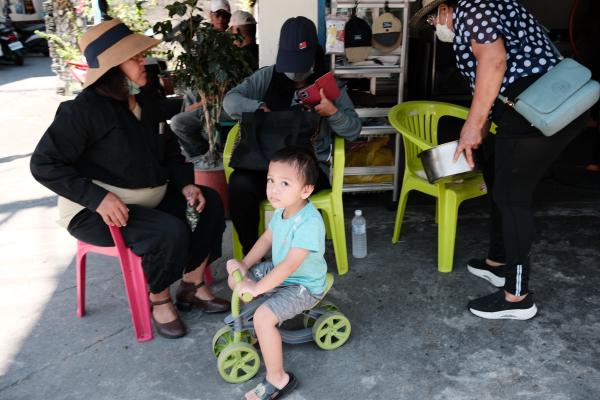
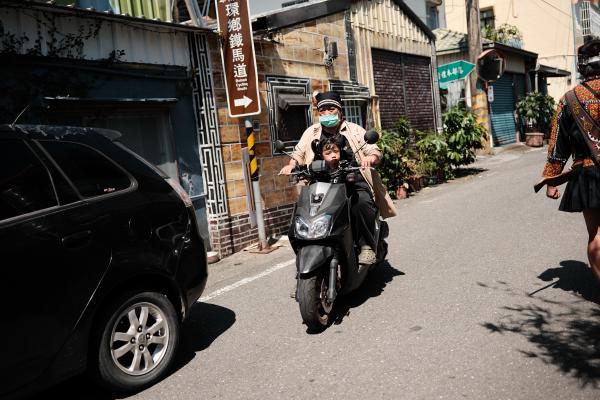

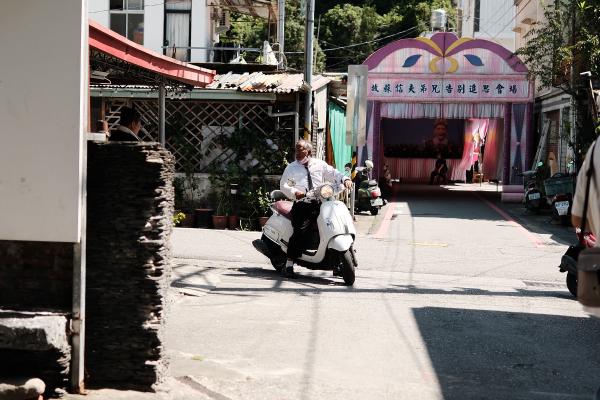
We hop in our bus to go up the mountain a bit. On the way, we pass the largest of the swings that make the tribe famous. The swings are used during various festivals.
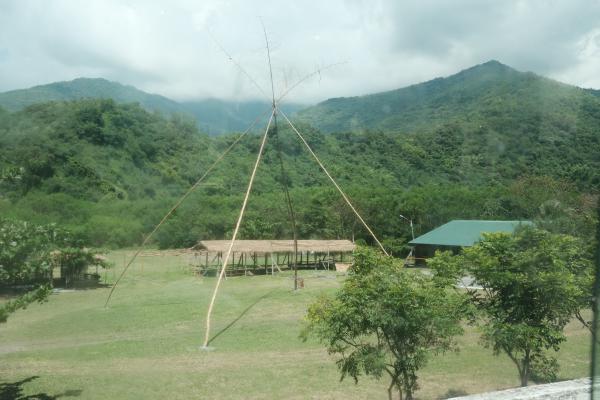
Our first stop at the top of the mountain is a smaller version of the big swing. As the only unmarried woman in our group, Liana is put on the swing. The tour guide instructs Bream to take her off the swing “without letting her touch the ground,” which leads to some confusion, but eventually he figures it out.
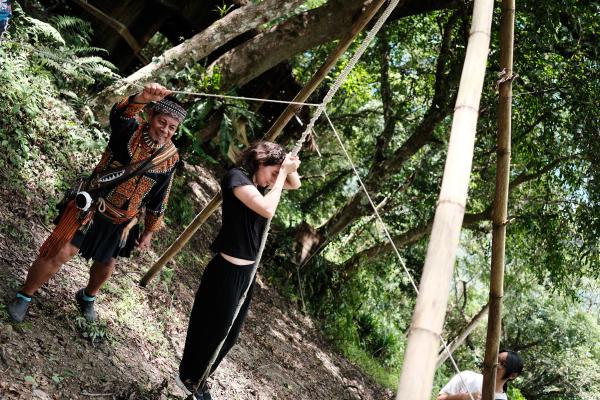
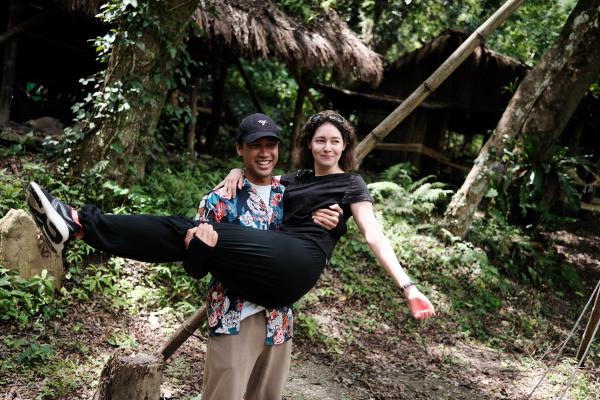
From there we were toured around the jungle a bit, with the tour guide occasionally pointing out and picking plants that were edible, and letting us taste them. This was my favorite part of the day.
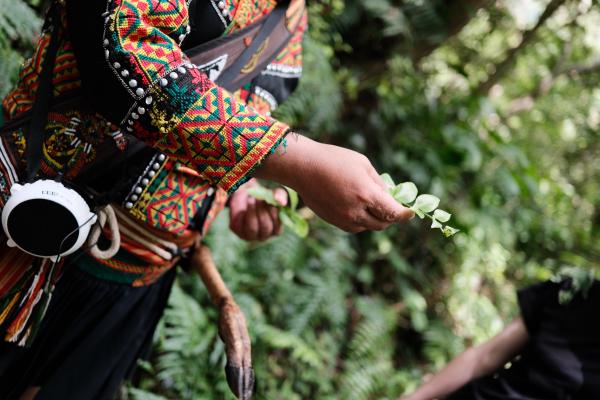
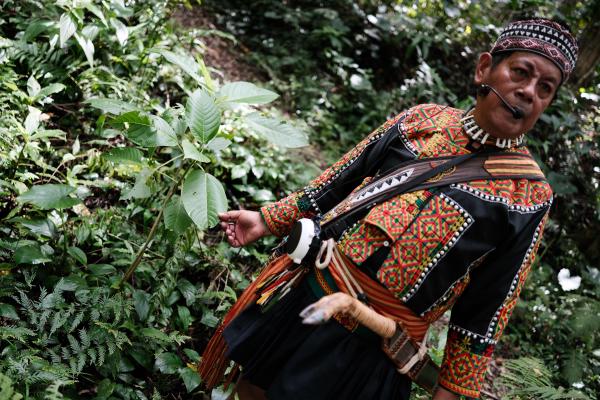
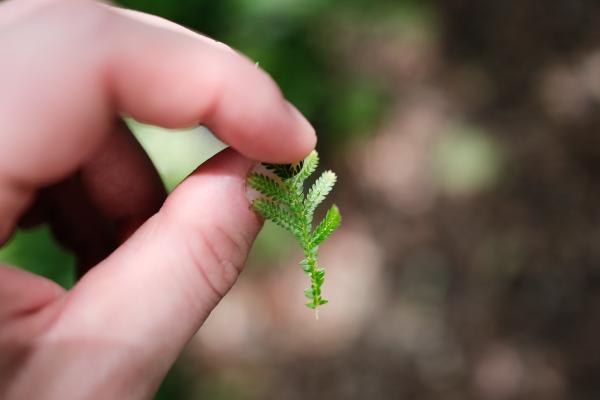
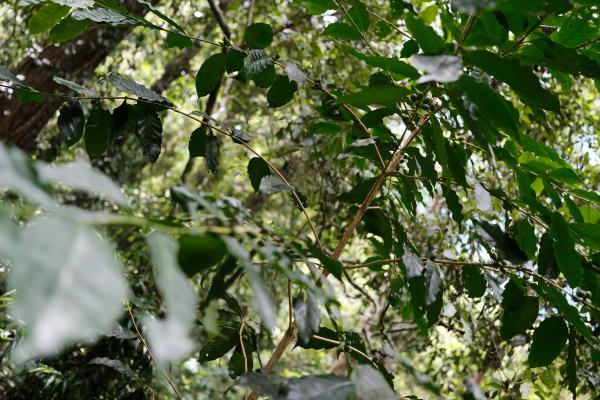
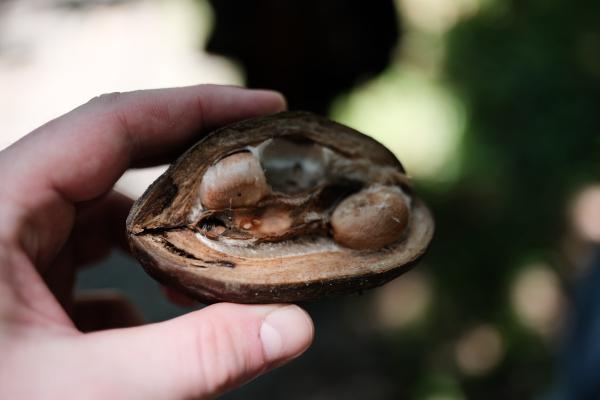
The tour guide also pointed out a stinging nettle plant, and told a story about how adults aren’t allowed to hurt children that aren’t their own, but they can smack them with stinging nettle, and he believed this to be an effective form of corporal punishment. Hm.

After this the tour guide stuffed us in a hollow tree and told us the tribe likes hollow trees because they smack them with sticks to communicate across long distances, and also because there’s often beehives inside where they can get honey. Our tree also had a beehive, which made me think about murder hornets, so I didn’t enjoy being in the hollow tree. Also, he makes us listen to the tree bark, and is surprised we hear nothing. He says the ability to hear the tree is based on wisdom, so I guess we aren’t wise. He says that hunters have to have very sensitive hearing in the forest.
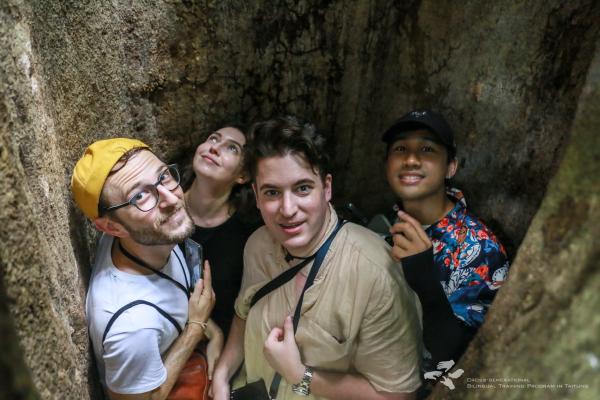
He hikes us up past a bunch of old Japanese bomb shelters, passes out a bunch of headlamps, and takes us into an old cave full of bats. He wants us to be careful to not shine lights at the bats or be too loud and disturb them, but as soon as we enter the bats start flying around, so, they were disturbed despite our efforts.
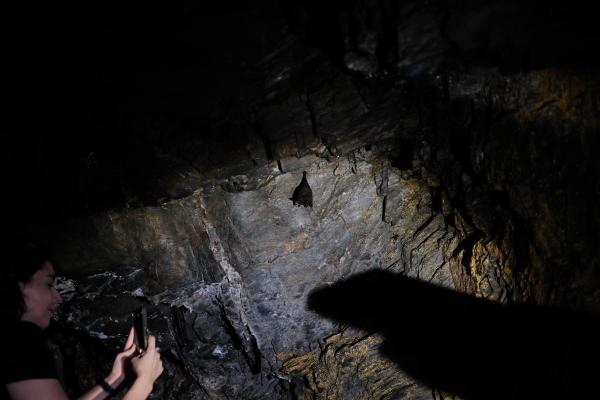


After the cave, we hiked over to a hut, where food was being set up, and a couple bows had been set out with some arrows for us to fiddle with. To access the hut, we had to step over some reeds on the ground, as well as an incense pot. This was supposed to dispel bad spirits or something.
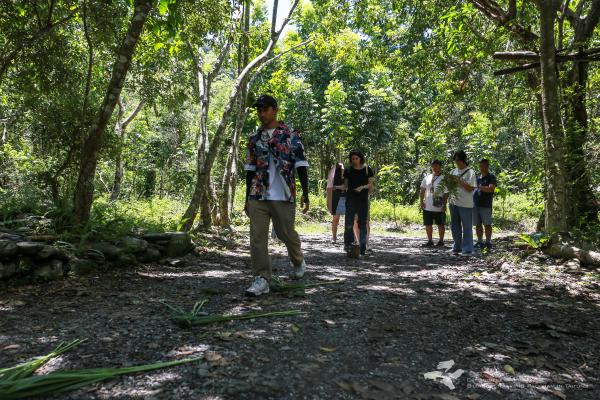
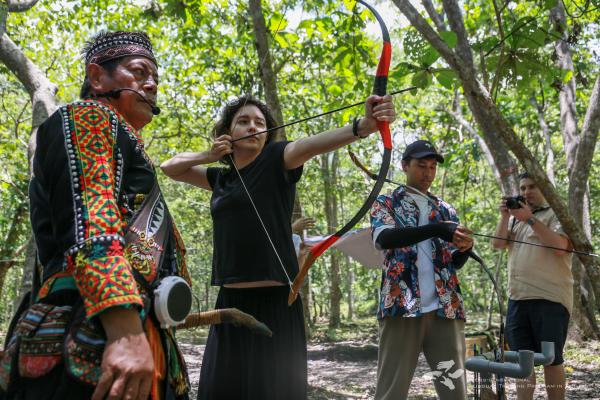

After we were done messin around, we’re brought to a pile of dirt and rocks. This was a traditional way of cooking called, I believe, “Ichibi.” The method involves having the kids dig a huge pit and chucking a bunch of vegetables and whatever other food into it. They cover this with stones, set a fire on the stones, and then cover the whole thing in mud and let it cook. Apparently it doesn’t cook very well but they eat it anyway. It’s supposed to be a good activity to do when the parents are out hunting or whatever, and the grandparents want to keep the kids busy. Thus, the tour guide seemed to feel quite nostalgic about it. He described his culture as a scarcity culture and said that being able to eat so much food at once was a delight.

We dig out the Ichibi and bring it over to a table where a veritable feast had been laid out. It’s all super good food. I really like the blood sausage. Some of the food is made with herbs we saw in the forest. I like that. We eat and talk a while. Some tea is served, which we can optionally mix with a millet wine they make locally. I thought it was surprisingly refreshing.

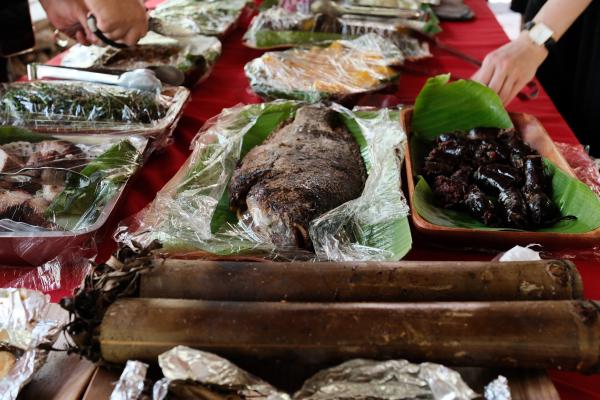
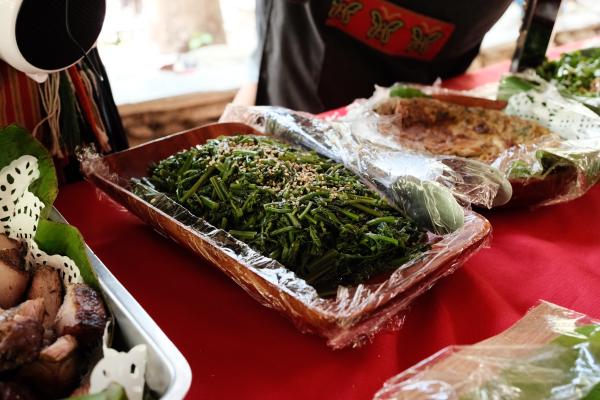

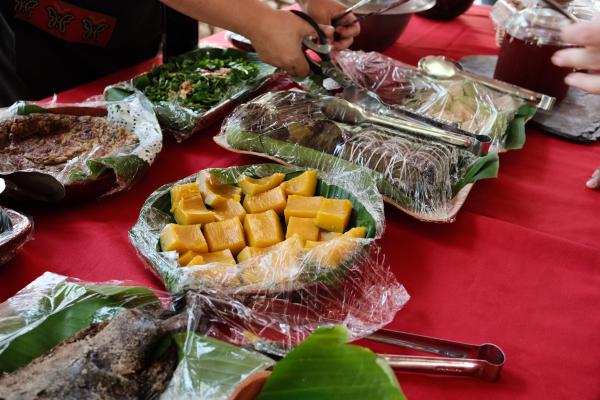
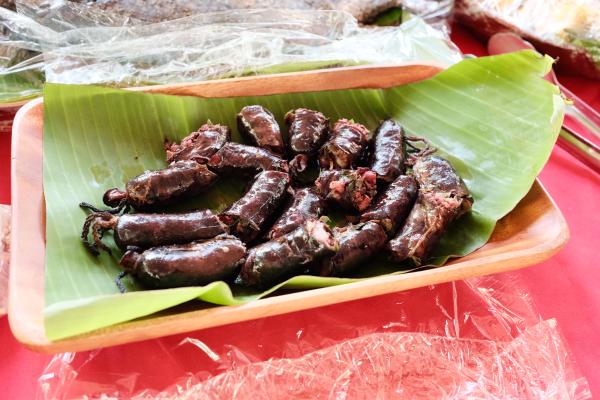
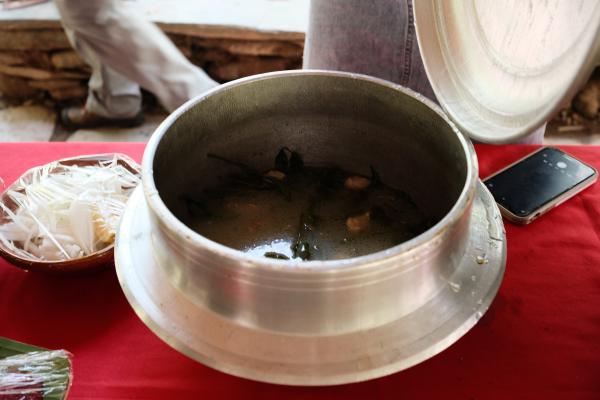
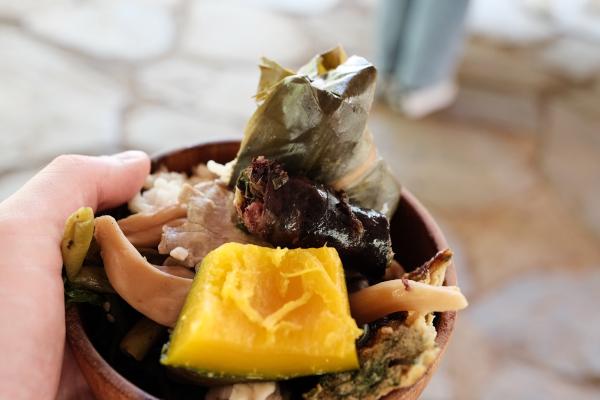
After lunch we had a feedback session, which was part of why the government was paying for us to be there: we were to let the tour guide know what we thought, and any suggestions we have. Personally I didn’t really have any notes, I had a great time, and mentioned I’d have paid a lot to just walk around the forest with the dude and learn about all the plants and what I can eat.
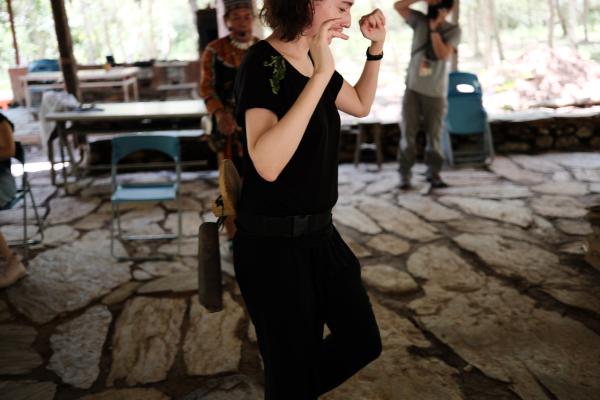
We finish off with some kind of traditional activity where a bell is strapped to our waist and we walk and try to regularly ring the bell with our hip movement. Liana and I both do it, and she has more swagger than me so she wins handily. It’s explained to us that bells make for a good way to communicate across great distances.
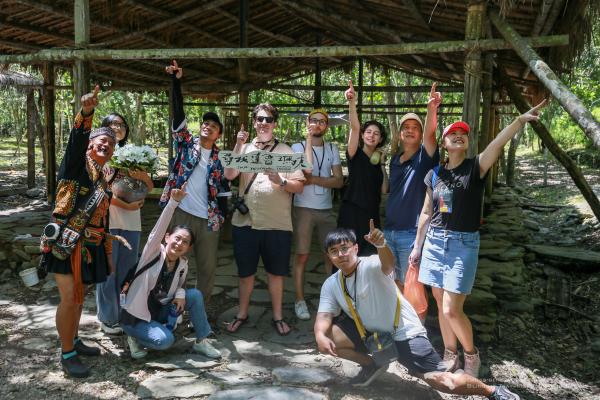
Sunrise Driftwood Workshop and Paiwan Tribal Community Tour
After that excellent and exhausting tour, we pile back onto the bus and, after a quick 7-11 stop (refill water bottles!!), we all pass out for the hour drive to the next tribe we were to visit.
We stop at a teahouse right above Duoliang Railway Station , which I believe is the more famous thing in the area. The station is defunct now, but affords good photos of trains with the ocean in the background, if you’re into that kind of thing, which judging by the google maps page for the place, many thousands of people are.
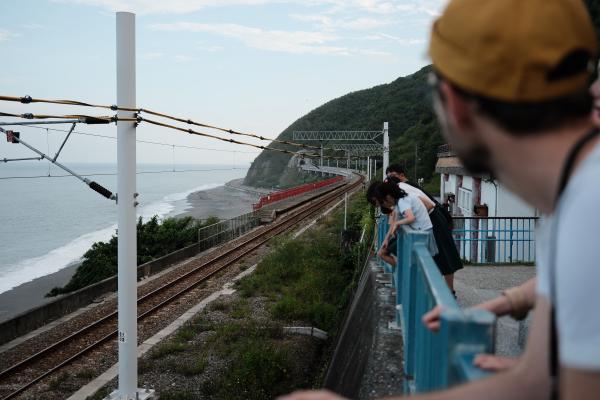

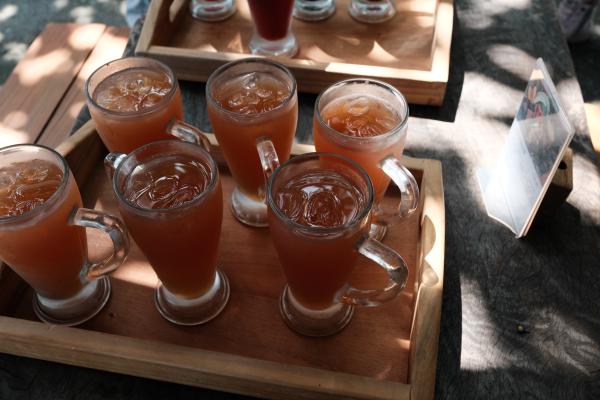
The tea shop was combined with the local cultural center, which included a woodworking shop. The woodworking cultural center thing was set up after a major typhoon caused a great deal of destruction in the village, upon which event many descendants of villagers came back from Taipei and elsewhere to help rebuild. They didn’t really have any carpentry experience, so older folks taught them, and then they applied these skills to making other cool things, like art. Now the woodworking shop is used to create art, toys, and puzzles from local driftwood and wood.
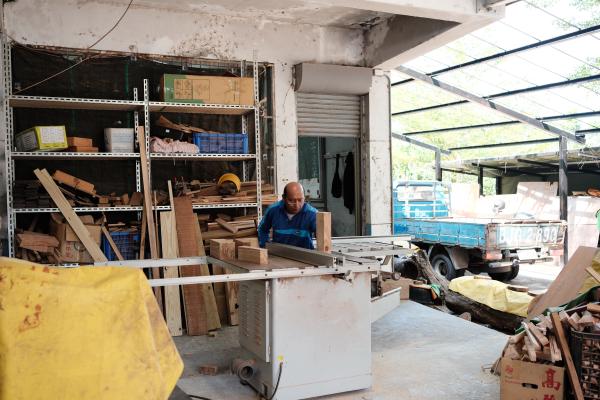
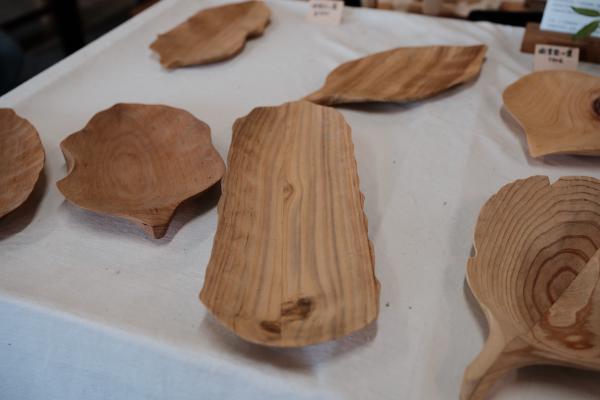
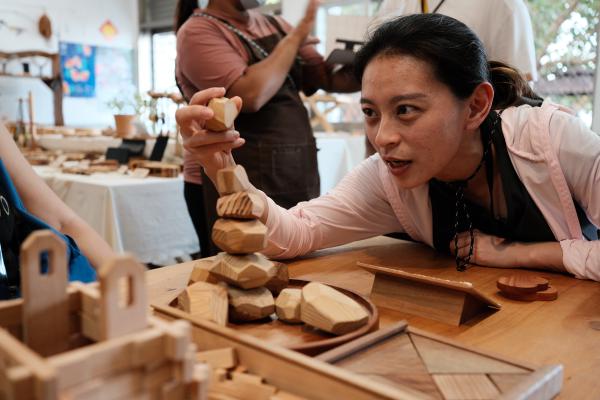
This tour was a bit less structured than the previous one, with a younger local finding us after we’d been chilling out for a bit, and reading a script off a piece of paper in somewhat challenged English. We quickly switched to preferring her to just speak Mandarin while Liana and Stephen helped translate. No local student provided for translation here, for some reason, not that I minded.
We were given rides (why not just a quick hike? I’m not sure) higher up the mountain into the tribal area proper, where we were brought to a little supermarket all the people we met really liked to talk about. It was run by the third generation of a family of Han Chinese that had come to the village decades ago. They’re renown for being kind and letting children and poor people just take food. Later we learn they keep fastidious records and people would often find their grandparents had large debts at the store after they died. A lot of the food in the supermarket was super oldschool, lots of various canned good that Stephen and the other Taiwanese kept saying they hadn’t seen in ages. That made me think about how boomers seemed to be eating a lot of funky canned food, which I thought was just a USA thing, but apparently not. We all bought little ice creams and headed to the second stop: a cool overhang that the village chief built cause he thought it would be a cool place to hang out in.
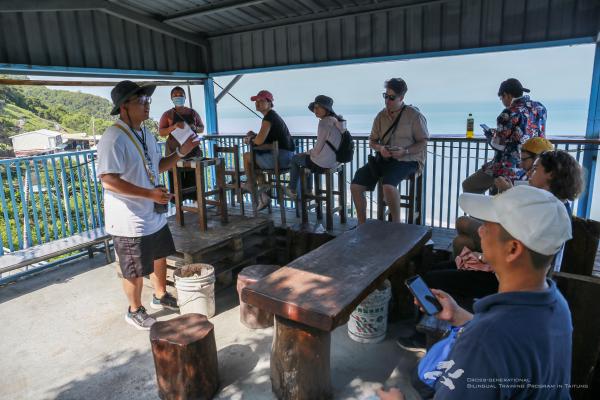
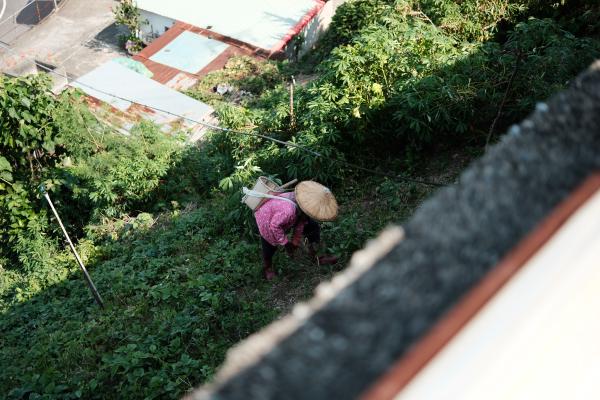
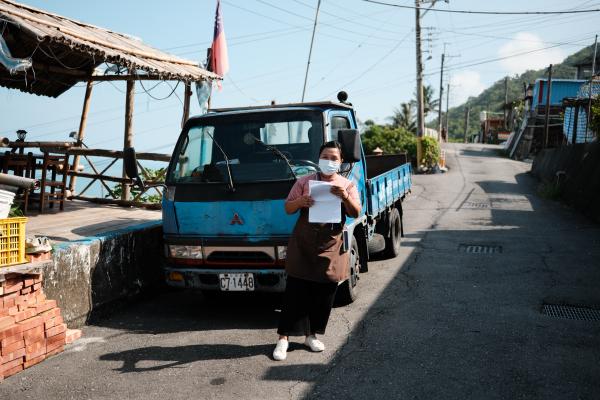
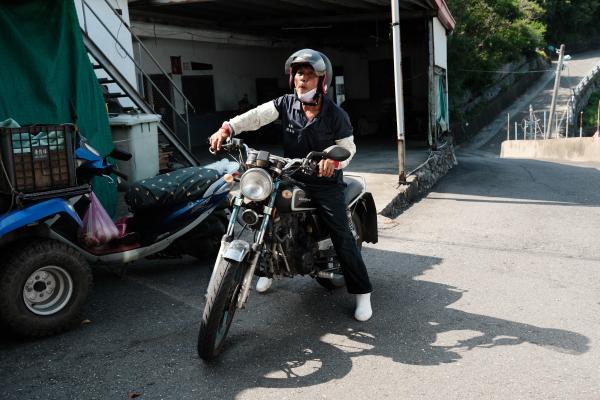
We piled back into the cars for another short ride (why not just hike???) to a cafe up on the hill. This was really cool, a gorgeous natural wood cafe with all outside seating, facing out over the ocean. Surrounded by native plants and little nick-nacks. All local to Taiwan tea, coffee, and snacks. We hung out at the cafe for a few hours without any kind of itinerary, so we basically interrogated the tour guide on information about the village, the tribal lifestyle, why she decided to move back to the town from Taipei, and etc.
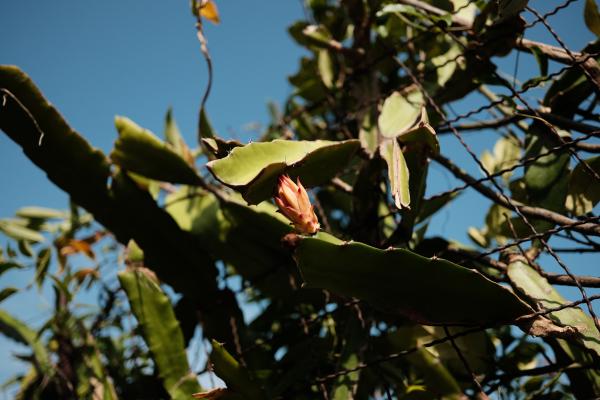

This tribe has two elders because one was essentially robbed of a bunch of shells by another village, so an elder from another tribe that married in took over the role. Apparently the shells were very valuable.
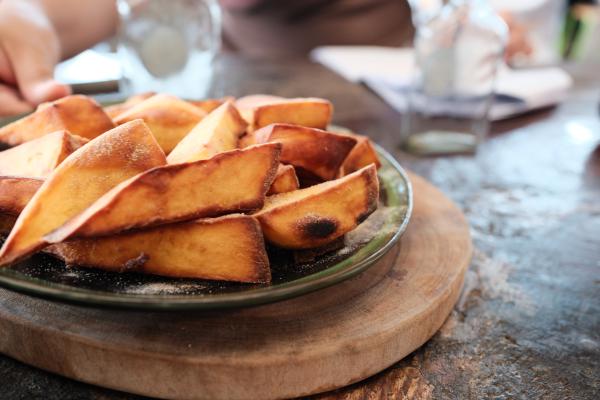

Apparently the cafe owner worked with the mayor to build the cafe without needing to buy land or pay rent, just because it improves the environment. Traditionally the tribe does communal ownership of land, but the Qing / ROC governments both required SOMEONE to own the land, which caused chaos. They also had stories about the initial arrival of Qing dynasty people, who would just farm wherever, then claim the land as their own. The tribe would do the same in return to make land claims, until one Qing governor just locked everything in (they describe him as “great”).
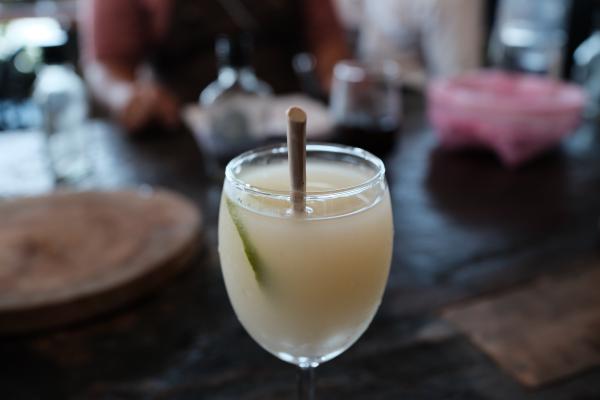
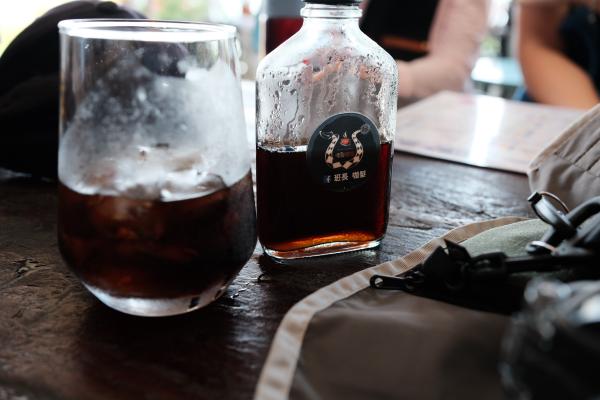
The cafe owner’s dream for the village is for more young people to come back. She’s not sure what they could do, or how the village could accommodate a huge influx of people if it involved building more housing. She says it’s difficult to think of ways to make money.
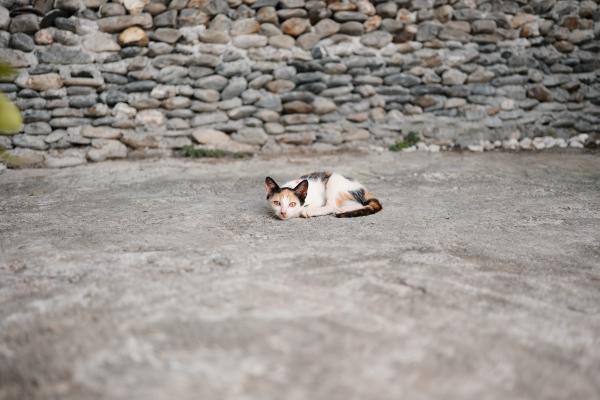
After a long hangout, we head back down to the woodshop, where there’s a wall with a timeline of this one Christian missionary’s time in the tribe, Hilber Jakob, from like the 40’s to 70’s. His contributions included things like building schools, roads, and etc. As a result, the tribe gets converted. It made me reflect further on the contradictory nature of imperialist action, which I believe Christian proselytizing to be. On the one hand, parts of a people’s culture are being erased in favor of a new religion, on the other, the benefits this guy (backed by the essentially infinite resources of whatever his Church was) brought to the tribe seem great! I haven’t had the opportunity to investigate further, and can’t find any information about the guy online, but it made me reflect not only on the effects of imperialism, and how anti-imperialist philosophies could also accomplish similar things in far-flung reaches of the world before people like the Christians can get to them, and what that might look like if the benefits could be wrought without the erasure of aspects a local culture.
We then to the abandoned train station. There’s a little food market down there that we ignore. We take some pics, then load onto the bus and head back to Taidong proper.
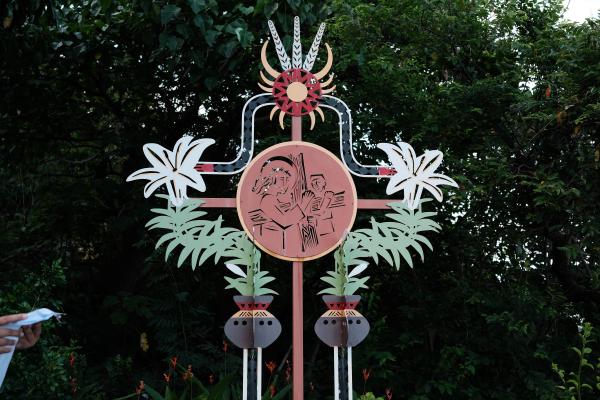

Eat Another Hella Good Dinner
Back in Taidong, we go to an apparently famous chicken place, “Haijing Chicken Restaurant” . Food was good.
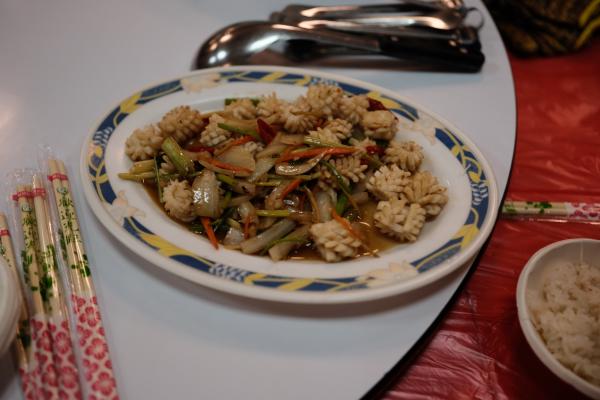
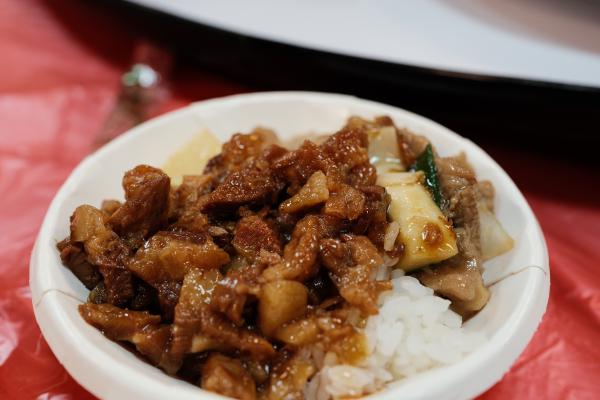

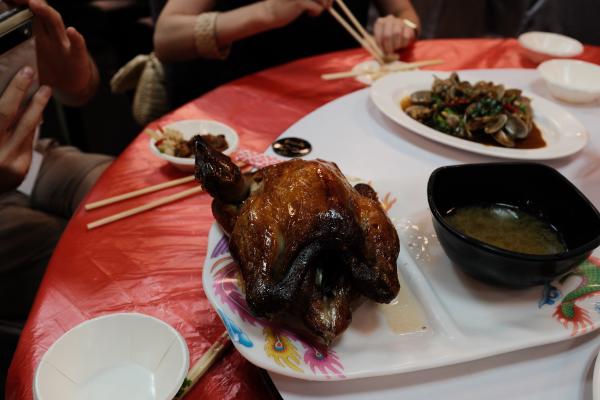
After that, we went to our hotel for the night, “SUP Daily”. They had lots of animals.
We had to get up at like, 5am the next day for stand up paddleboarding, so we went to bed pretty early.
Day 2
Stand Up Paddleboarding at Asscrack of Dawn
At some ungodly hour we woke up and piled onto the bus.
We drove over to a sort of lake not too far away. It was very pretty in the morning.
We originally were going to do stand up paddleboarding in the ocean, but they were concerned about the conditions of the water so close to a typhoon, so we instead went to a beautiful, placid lake. Best part is that we started at a much more reasonable time. I think we were going to try to do the ocean one at like, 4am or something ridiculous.
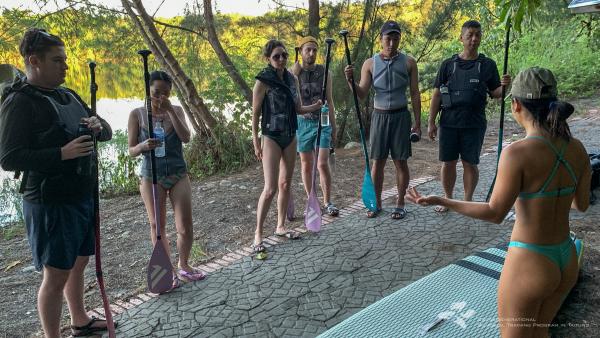
After a brief lesson, we were strapped into some lifejackets and pushed out into the lake on our boards. We were all able to stand on our boards without too much trouble after only a few minutes of practice, after which we zipped all around the lake, stopping occasionally for our guide to teach us some new techniques or game. There were a couple Taiwanese people not part of our tour. They were more interested in taking photos and hanging around, while the rest of us got rowdy and spent our time shoving eachother off our boards, racing, and doing yoga.
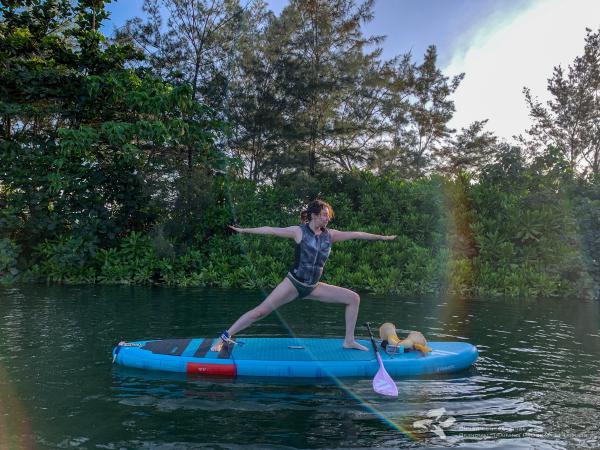
After maybe an hour and a half or so, we all paddle back to shore, load up onto the bus, and head back to the hotel for naps.
Eat Hella Good Lunch
After packing up, we load onto the bus and drive WAY out to Chenggong Township, a town about an hour from Taidong that’s famous for its harbor, where spearfisherman dock and sell marlin. Our first destination is a renowned and award-winning slow food restaurant, 旗遇海味. We arrive a little earlier than expected, and nobody’s hungry yet because of the breakfast we all ate (I didn’t eat breakfast and was starving lol but oh well), so we swapped our day around a little bit and explored the fish auction area and looked at the spear fishing boats.
After wandering around the big harbor area used for the fish auction, we went back into the restaurant, where the owner taught us the history of fishing in the area. According to him, the marlin fishing scene used to be much larger in the past, with hundreds of marlins being brought in every day, and boats catching many tens of fish a day. Nowadays, boats only manage to get 0 - 4 fish a day. He’s not sure why, but speculates it has something to do with overfishing or climate change. Thus he says the local economy is depressed, and the fishermen are having a hard time making a livelihood. There’s also less buyers for marlin now. Apparently it’s a very international market for the marlin, including Korea and Japan. He started his restaurant to help boost the fishing economy and also to show off the local fish.
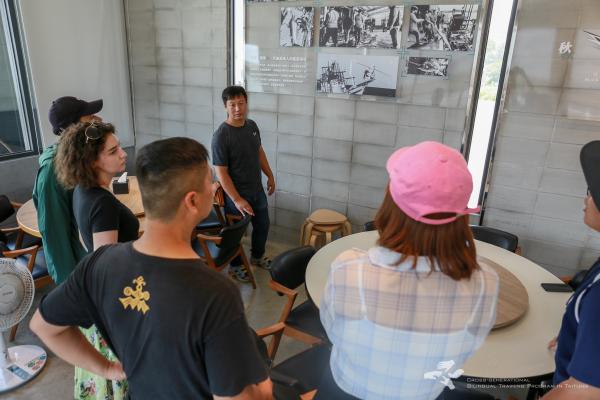
His restaurant is a highly regarded member of the Taidong “slow food” scene. “Slow Food” is a social movement that basically encompasses values of good, clean, and fair food harvesting, production, and preparation. There’s multiple “Slow Food Festivals” in Taiwan every year and it’s a rapidly growing scene. I’m not entirely sure which organization does this, but I was told his restaurant has the Slow Food equivalent of a Michelin Star.
Finally, it was time to eat! This was some of the best food I’d had in a long time. It was all local ingredients, including locally spear-fished marlin! Behold:
I went from starving to stuffed to the absolute brim. We lingered for only a little bit but needed to keep on schedule, so I had to haul my fat ass out of the chair and get ready to hike up the hill to our next destination. First, we were able to witness some fresh fish being auctioned off in the auction area!
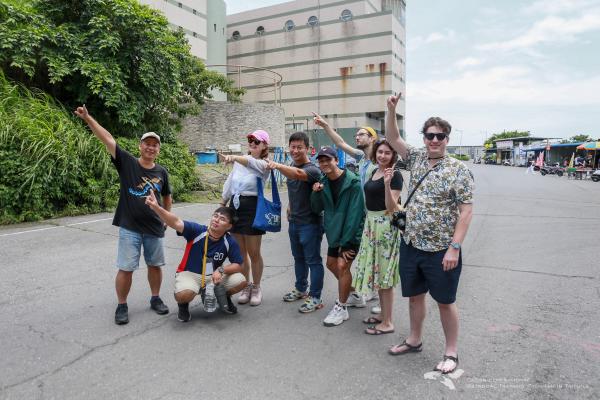
Tour Some Old Japanese Dude’s House
So apparently Chenggong harbor was built mostly by the Japanese during their occupation. It’s really interesting to hear things from locals like “we didn’t really know how to catch those kinds of fish until the Japanese taught us,” or talking positively about the various forms of infrastructure the Japanese brought with them. Perhaps certain legacies of imperialism sit better with locals who don’t weren’t around for the horrors of it, or maybe those who suffered the worst of it didn’t have much in the way of ancestors that survived today, or maybe it wasn’t that bad, who knows? It’s a question I really want to explore more.

Anyway, the local governor the Japanese instilled to, ah, “govern” the area, built this house in a place where he could see the whole harbor. Its architecture is a unique mix of Japanese and European, with a second story platform / porch that’s more European style while the main house is entirely Japanese. It was apparently his routine to take breakfast on the porch while looking over the harbor.
He is said to be much beloved by the locals and chose to live his entire life in Chenggong, even after occupation ended, and was given permission by the ROC to keep living there and maintain his household. He’s even said to be buried somewhere in the area.

After the history lesson, we explored the house. It’s called 菅宮勝太郎宅.
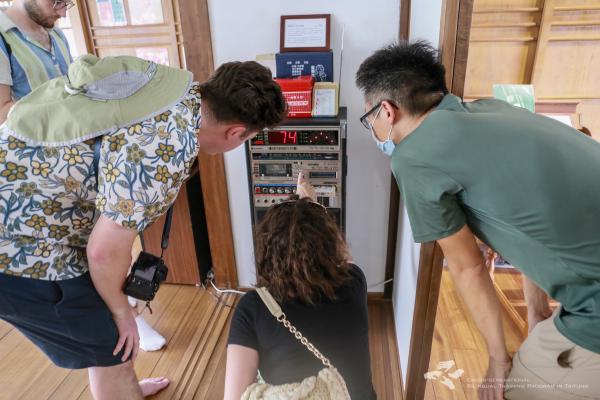
After wandering around the two floors of the house for maybe a half hour, we headed back to the cafe to relax with some coffee and desserts. The cafe is called 眺港café.
We had a bit of a feedback session during this time, then took the inevitable goodbye picture.

Go Home
We were all so exhausted at the end of the trip. We got back into the bus and barely said a word on our way to the train station. I actually had work to do as well so I couldn’t linger and chat, instead I had to post up in the train station straightaway. It’s good we got to the train station when we did, because at the last second we discovered that for some reason I had purchased my “return” ticket as if I was leaving from Taizhong to Taipei. No idea why! So I got it changed in time to get on a train going back to Taipei.
It was a really fun trip, and I’m really grateful for the unique itinerary. After traveling quite a bit, I’ve grown tired of the typical rote itinerary for a destination: museums, aquarium, zoos, government buildings, etc. It’s nice to go and be toured around places I wouldn’t have thought to find on my own. Especially since we had locals to talk with, and Mandarin interpretation help!
I highly recommend Taidong as a destination for those coming to Taiwan for more than a week. It doesn’t take too long to get to by train from Taipei, maybe about 4 or 5 hours depending, and there’s lots of unique, somewhat strange, history here, between the ROC settler colonists, the Japanese imperialists, and the various waves of Han imperialists, alongside Taiwan indigenous people. Not to mention the current strategic importance of Taidong as a large airforce base from which many tens of fighter jets take off every day, it’s just a very unique place!
I also highly recommend joining in similar tours to the one I went on if the opportunity presents itself. The hosts were struggling with people thinking the opportunity was too good to be true and thus is a scam. So hopefully you can find this post and know, nope, it’s real, and very fun!
As always, feel free to email caleb at this website if you have any questions, or perhaps can help me add more information about the places I visited!
